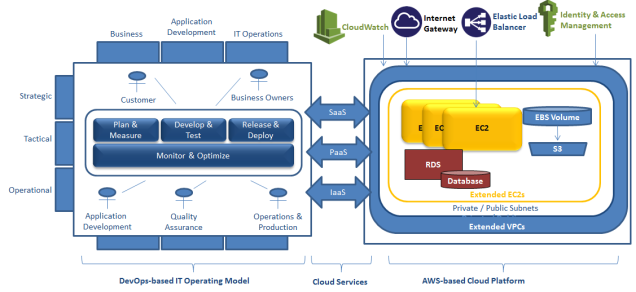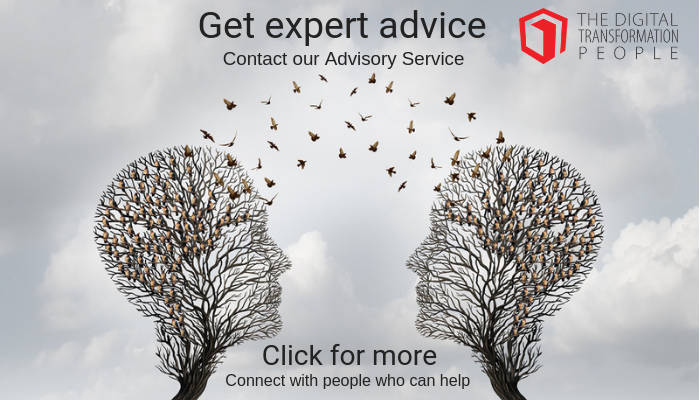Are IT organizations headed for irrelevance? No, but changing today’s IT paradigm is urgent. Recently I had the chance to attend a great conversation on Twitter and Youtube.
Brilliantly facilitated by Tim Crawford, the discussion revolved around the relevance of IT today and involved Mark Thiele EVP Datacenter at Switch, Stuart Appley CIO at Shorenstein, and Bob Egan CEO of the Sepharim Group.
A consensus on the fact that a greater collaboration of the business and IT is the way to go
Throughout the conversation – that’s not the words that were used – but it seemed that there was a consensus on the fact that the way we delivered IT services had reached an inflexion point and that new paradigm more centred on “Piecing Together the Business and IT” and on “Not Separating IT From the Business” would make IT more relevant particularly in today’s digital age.
Mark brilliantly reminded a fundamental rule of future IT organizations, “Spend more time delivering new apps and value and less time customizing legacy.”
Bob, advocating the business perspective, reminded this critical fact that IT tends to forget, “The Consumerization of IT is more about people, process and user experience than it is about tech. Important for IT to digest” and warned, “Words of a wise man. Does your IT org have a future?” before concluding, “IT orgs that will survive and thrive will strike a balance between the deployment of tech and the deployment of the business.”
Now that the foundations and principles for a better IT are laid, what is the next step?
The discussion thrilled me because it substantiated the point I developed in my recent book “The Complete ITaaS Delivery ModelTM: The Art of Integrating AWS, DevOps and ITIL Into Complete ITaaS Delivery Models” that, new IT service delivery capabilities involving the business and IT into an integrated platform of people, processes, best practices, collaboration and governance mechanisms and cloud services and infrastructure was definitely the way to go.
The conversation in a sense validated The Complete ITaaS Delivery Model™ that I widely developed and detailed in the book to provide CIOs and business lines with a concrete and accurate answer to the need for a new IT service delivery model.
The AWS-based Complete ITaaS Delivery Model
My point is, just like years ago the UK’s Office of Government Commerce (OGC) delivered through ITIL, a set best practices used to develop and execute IT service management the IT industry needs now, not tomorrow, a reference model that crystallizes the foundations and principles mentioned above by Tim, Bob, Stuart, Mark, Jason Bloomberg and many others to support the implementation of what is increasingly called Digital Organizations.
The five indispensable principles to know about the complete ITaaS Delivery Model™
I have been using the model in its current version for almost three years to implement ITaaS capabilities in private and public cloud contexts.
The Complete ITaaS Delivery Model™ is an integrated business capability composed of the three fundamental build blocks including theCloud Platform, the Cloud Services and the IT Operating Model.
The five driving principles of the Complete ITaaS Delivery ModelTM are the following:
Responsiveness to market opportunities is the business bottom line
The Complete ITaaS Delivery ModelTM is based on the fact that the competitive environments got globalized, tougher, yet profitable and that what business lines are primarily seeking is responsiveness to the added-value market opportunities that pop up all over the world.
Cloud solutions and infrastructure by alone in their corner do not deliver the expected market responsiveness
The model is based on the belief that cloud solutions and infrastructure by themselves will never deliver the expected responsiveness to market opportunities, but combining the benefits of cloud with those of agile and cross-functional collaboration will definitely help to make businesses responsive.
Cloud solutions and infrastructure free up resources that cannot be regarded as Agility
The resources and time freed up by cloud solution and infrastructure through virtualization, automation, resource pooling and elasticity cannot be regarded as agility, they are agility factors. These agility factors must be proactively used through organizational design and operational excellence best practices to break down organizational silos and transcend organizational hierarchies to create authentic organizational agility.
State-of-the-art cloud services are the foundations of the so-called Organizational Agility
Cloud services like any basic authentic service involves a consumer of the service, a provider of the service and an SLA that clarifies the mutual expectations. By focusing both parties on their respective core competency, the notion of service and associated SLA facilitates the interactions results in the expected responsiveness to market opportunities.
DevOps augmented with Agile Scrum and ITIL provides the mechanisms to establish Lean and Agile IT operating model
DevOps augmented with ITIL Change Management is the foundation of the IT operating model; it provides the mechanisms to break down the organizational barriers, clarifies the roles and responsibilities across the organization value chain, highlights the key processes and practices to rely on and delivers the delivery pipeline that guarantees continuous deployment of added-value value changes in application.
Recommended and indispensable resources
I honestly recommend the book, “The Complete ITaaS Delivery Model™: The Art of Integrating AWS, DevOps and ITIL Into Complete ITaaS Delivery Models.”
The book takes Cloud, ITaaS and Digital Transformation from today’s fiction, elusive definitions and abstract art to reality and the tangible business capabilities that will give CIOs the right to seat at the business table.
Through a real-world ITaaS transformation project I led last year, it takes you to a step-by-step digital transformation journey illustrating issues as key as:
- Development of digital transformation strategy and the associated business cases and transformation roadmaps
- Design of authentic cloud services e.g., SaaS, PaaS and IaaS
- Definition of AWS platform architecture
- Transformation of IT operating models to DevOps
- Deployment of organizational changes
Article by channel:
Everything you need to know about Digital Transformation
The best articles, news and events direct to your inbox









